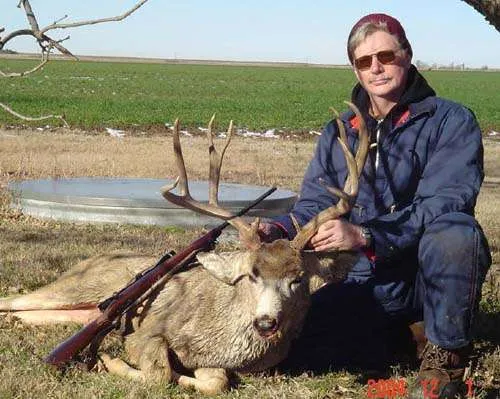 Bill Snyder, the Ted Kessinger of big-time college
Bill Snyder, the Ted Kessinger of big-time college
football, has offered a priceless advertisement
for small college football.
Snyder is the coach who transformed football at
Kansas State University from Big 8 door mat to
Big XII powerhouse. On August 7, as the Wildcats
opened fall camp, Snyder lectured reporters with a
dim (to be kind) critique of major college football:
The game has been disgraced, deeply corrupted by
the celebrity of television, the money of powerful
broadcast interests, and the conniving influence
of sponsors, boosters and advertisers. The result,
Snyder said, is that the values of young athletes are
routinely distorted in the name of money, prestige
and corporate profiteering.
“I think we’ve sold out,” Snyder said. “We’re
all about dollars and cents. The concept of college
football no longer has any bearing on the quality
of the person, the quality of students. Universities
are selling themselves out.”
*
BEFORE Bill Snyder began to accumulate
a reputation as a student’s coach, there was
Ted Kessinger, head football coach at Bethany
College, a patron, guardian and advocate for the
student athlete. Kessinger believed that college
students (in his particular realm, student-athletes)
were searching for deeper meaning in their lives,
and that rising to the top, being the best, did not
mean being consumed by the system. The challenge
was a moral one; the finest institutions, the
best coaches, sought to develop in their students
character and intellect, and instill devotion to the
benefit of others.
Kessinger was inducted into the national
College Football Hall of Fame four years ago
with a 28-season record of 219-57-1; his Bethany
Swedes finished in the NAIA top 25 poll 20
separate times and won 16 conference titles and
13 National Championship playoff appearances.
Kessinger never had a losing season. His coaching
accomplishments include 11 conference coach of
the year awards, inductions into the NAIA Hall of
Fame (2003), Kansas Sports Hall of Fame (2005),
and the Kansas Collegiate Athletic Conference
Character of Champions Award is in Kessinger’s
name. When he retired in 2003, Kessinger was
the NAIA’s most successful active coach in both
percentage of victories (.792) and total wins.
Kessinger’s teams comprised successful athletes
and scholars – nearly 400 All-KCAC players, 43
NAIA All-Americans and 49 NAIA All-America
Scholar-Athletes.
Ask the man how it all feels, and he takes the
conversation to the players he coached, what kind
of lives they sought, how the spirit and character
of a young athlete is crucial to the development of
the person he will become. The lives of these players,
their ultimate goals, their growth as decent,
unselfish and honorable human beings is as important
– perhaps more so – as their performance on
the football field.
*
IN A CONNIVING, even sinister system, colleges
recruit athletes for institutional prestige and
financial gain, leaving them with little “education”
beyond the rote schedule of life as an athlete.
There is little said, or taught, about life as a high
achiever, no examination of their passion, their
intellectual curiosity, their purpose and depth.
There is little or no consideration that college offer
students an understanding of the conflicts, debates
and issues that shape the culture they live in.
Nothing adds up for the student because, any
more, nothing is designed to add up.
“It (collegiate football) is no longer about education,”
Snyder said. “…Everybody is building Taj
Mahals and I think it sends a message – and young
people today I think are more susceptible to the
downside of that message, and that it’s not about
education. We’re saying it is, but it’s really about
the glitz and the glitter, and I think sometimes
values get distorted… I hate to think a young guy
would make a decision about where he’s going to
get an education based on what a building looks
like.”
*
THE NCAA, pillar of big-time collegiate sports,
recently changed its rules to allow the five largest
and wealthiest conferences to make their own
rules. The rules are mostly about money, how
much amateur student-athletes may be paid, and
how much they are no longer required to learn
while they attend, or at least enrolled in, school,
how much money schools no longer must share.
Bethany College and the nine other members
of the KCAC are among the smallest in college
athletics, but among the highest in attaining a true
measure of the student-athlete. These schools set
the complete example of what Bill Snyder was
talking about, of what Ted Kessinger devoted
decades to achieve.
In the truest collegiate sports, players actually
attend class, take the tests, and earn their scholarships.
Their fans gladly pay a reasonable price for
their own seats. They see young men and women
compete for the fun of the game, for its lessons, its
challenges, its opportunities for higher learning.
Here is sport supported by people who believe
there is far more to a game than trading flesh
and money for more flesh, more graft and more
This is what Bill Snyder was talking about. It
is what coaches like Ted Kessinger believed and
***
The bitcoin;
a bitscam?
Not long ago federal regulators began warning
consumers about the risks of using “virtual currencies”
– in particular, the bitcoin.
This development falls in the category of things
mother always warned us about. Among them,
The Internet is a wonderful thing, but like all
wonderful things, it can have its un-wonderful
moments. Fraud is one of them. Cyberworld is
loaded with fun and imaginary pursuits such as
fantasy football, avatars, parallel universes, dream
worlds and so on. We can escape reality, live in
another skin, enjoy the sweet fruit of imagination.
We can also take leave of our senses, bite the
huckster’s sour apple.
In some of these dream worlds, citizens buy
things. They exchange real money (credit cards)
for dream currencies. Until recently this seemed
all fun and above board. Then, that fine line
between real and not-real got fuzzy, and the bitcoin
emerged in the mists, a wildly popular currency
traded on-line to buy real things. People
began to believe, oddly, that if a bitcoin could buy
something real, it, too, must be real.
The Consumer Financial Protection Bureau
warns that bitcoins may be real in another world,
but they are not in the real world; bitcoins are
not backed by the government, they have volatile
exchange rates, and they are easy pickings for
hackers and scammers. Unlike real accounts in
real banks, bitcoin deposits in bit-world banks are
not federally insured.
In other words, a bitcoin is a bitrisky. Ever seen
one? Held one? Ever bit a bitcoin?
Likely it would be wooden, like the nickels carnies
traded at the fair.
***
The Internet,
a procrastinator’s heaven
In a recent interview for The New York Times
Book Review, Garrison Keillor was asked about
procrastinating, what he might read while putting
off things that shouldn’t be put off. This led, of
course, to the Internet.
“Procrastination is available at your fingertips,
the whole vast www world,” Keillor said. “Cat
videos, vicious gossip about pop stars, survivalist
blogs, right-wing paranoia, it’s all there. The
Internet brought the barroom, the porn shop, the
fleabag hotel lobby and the men’s locker room into
every American home, and you can now hang out
with ne’er-do-wells to your heart’s content without
anybody knowing about it.”
And have a bitcoin, too.
– JOHN MARSHALL





